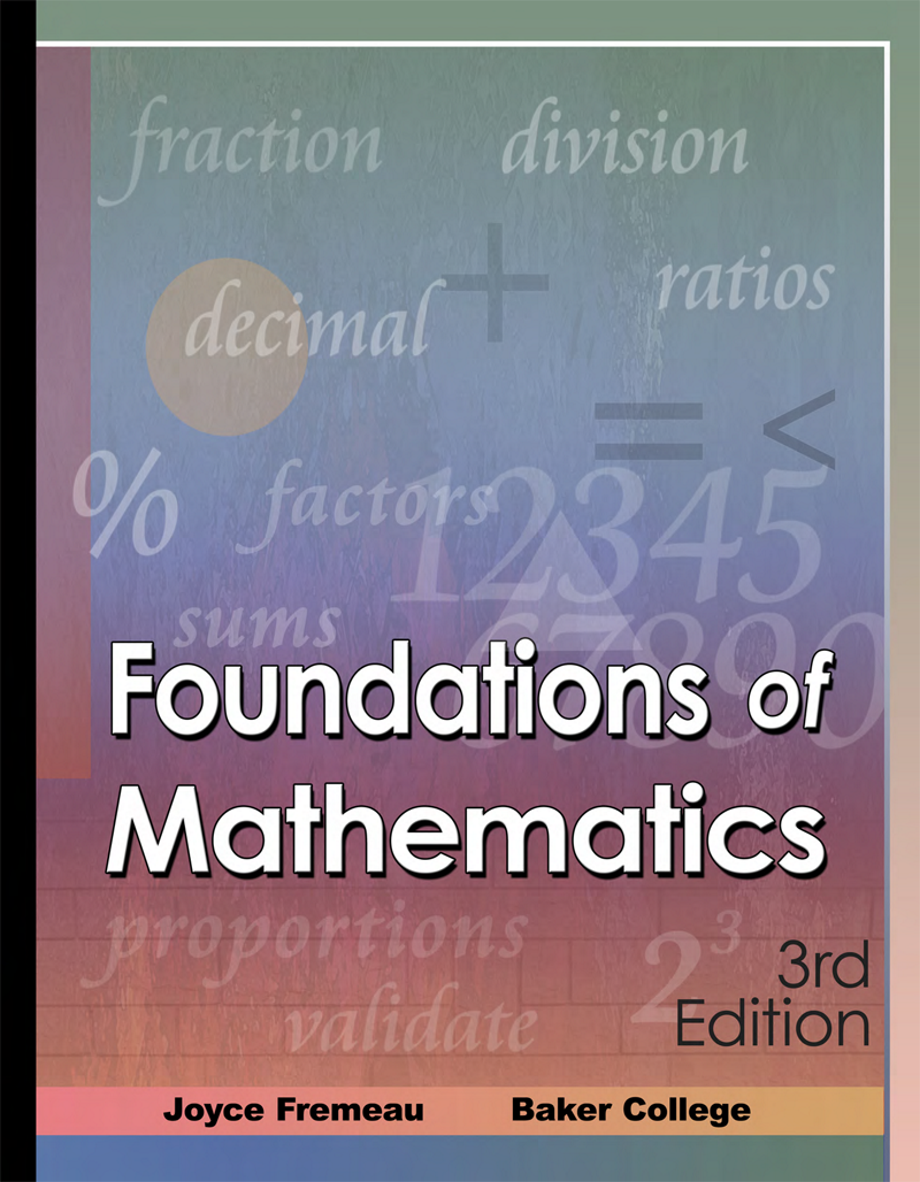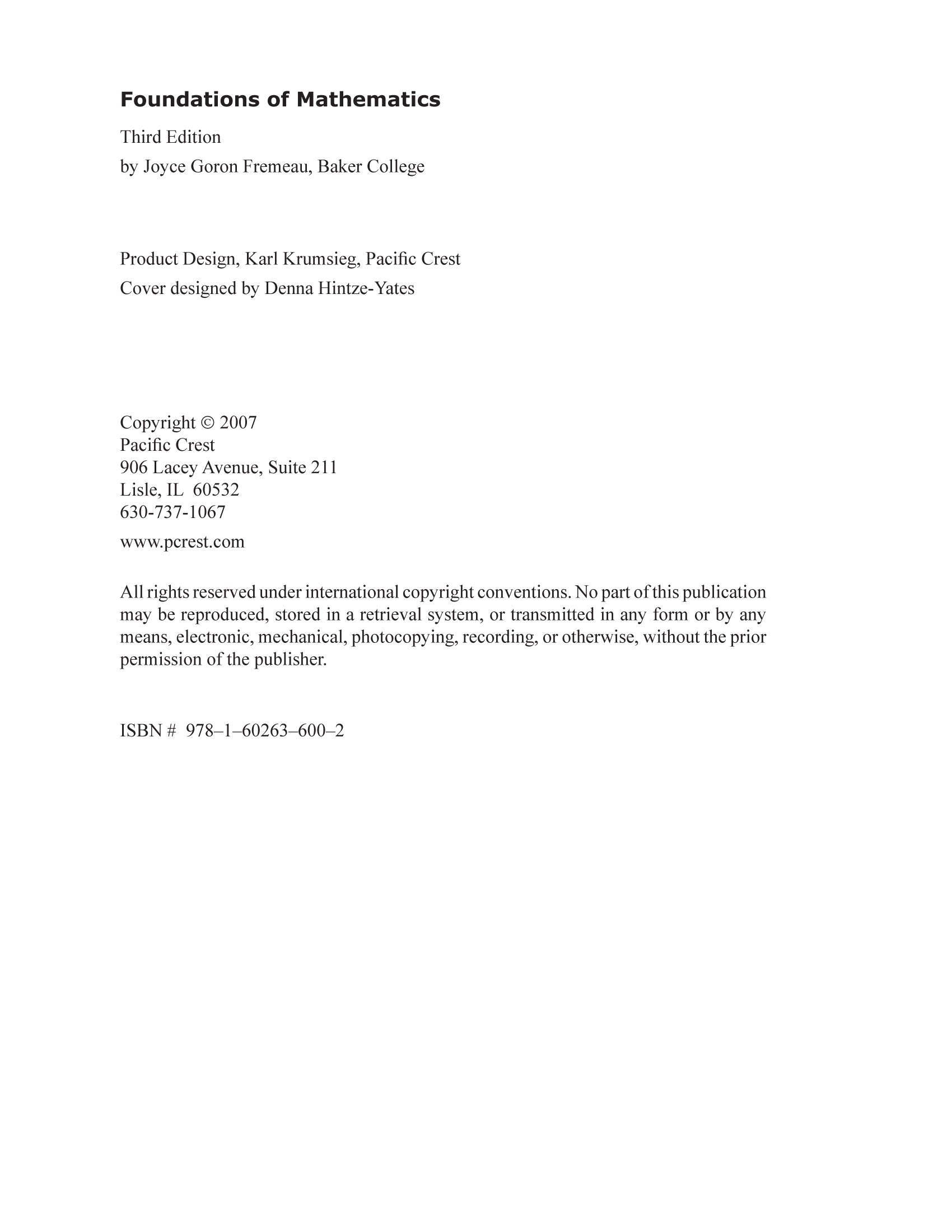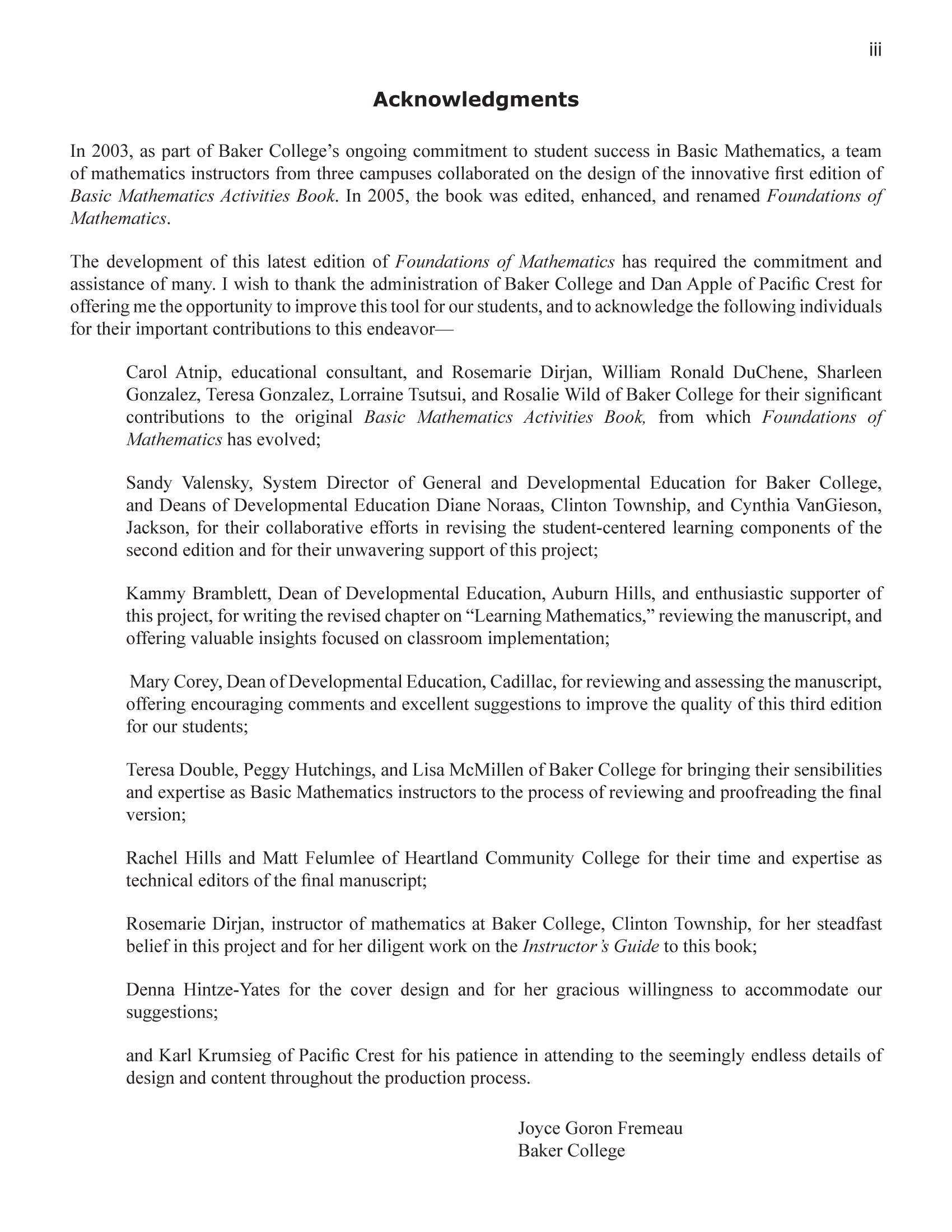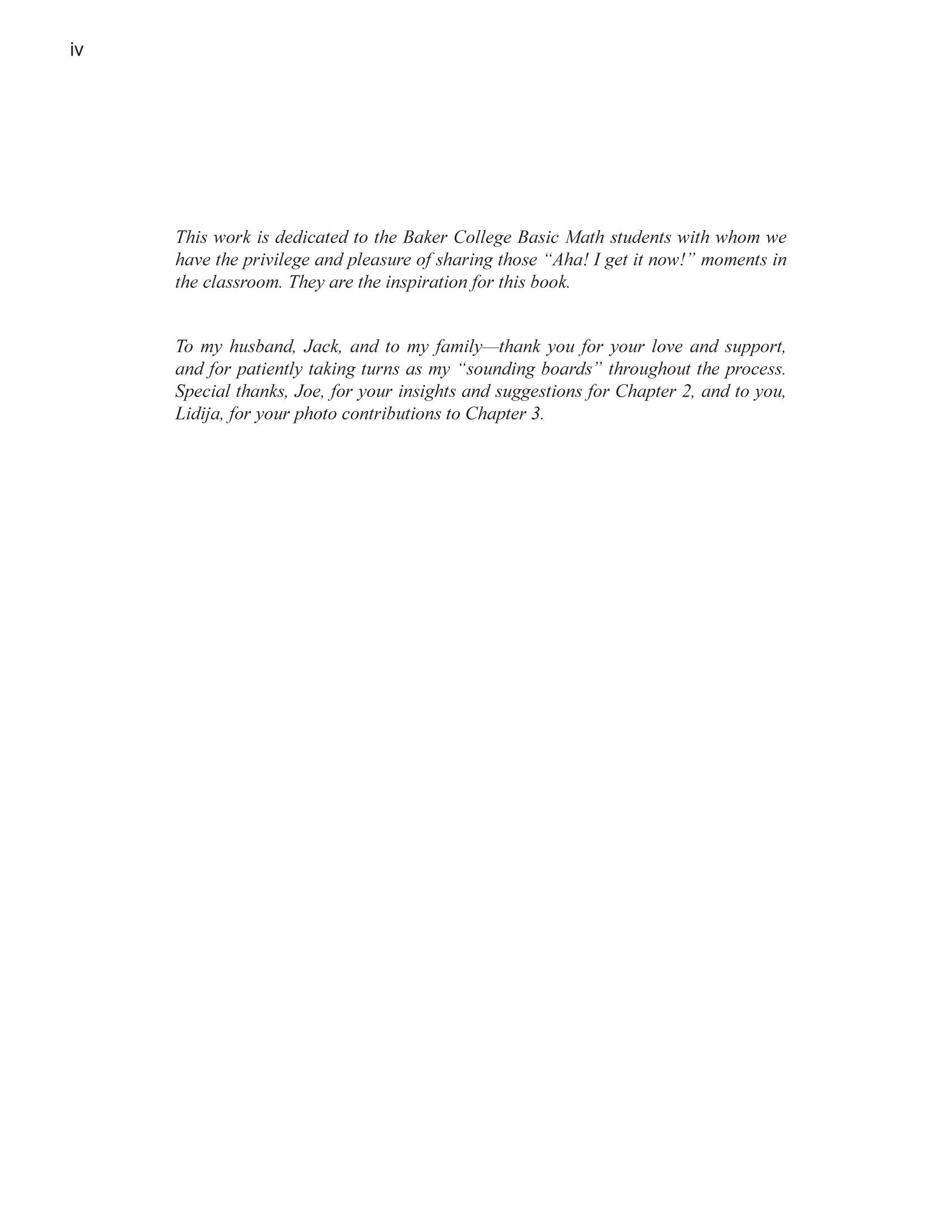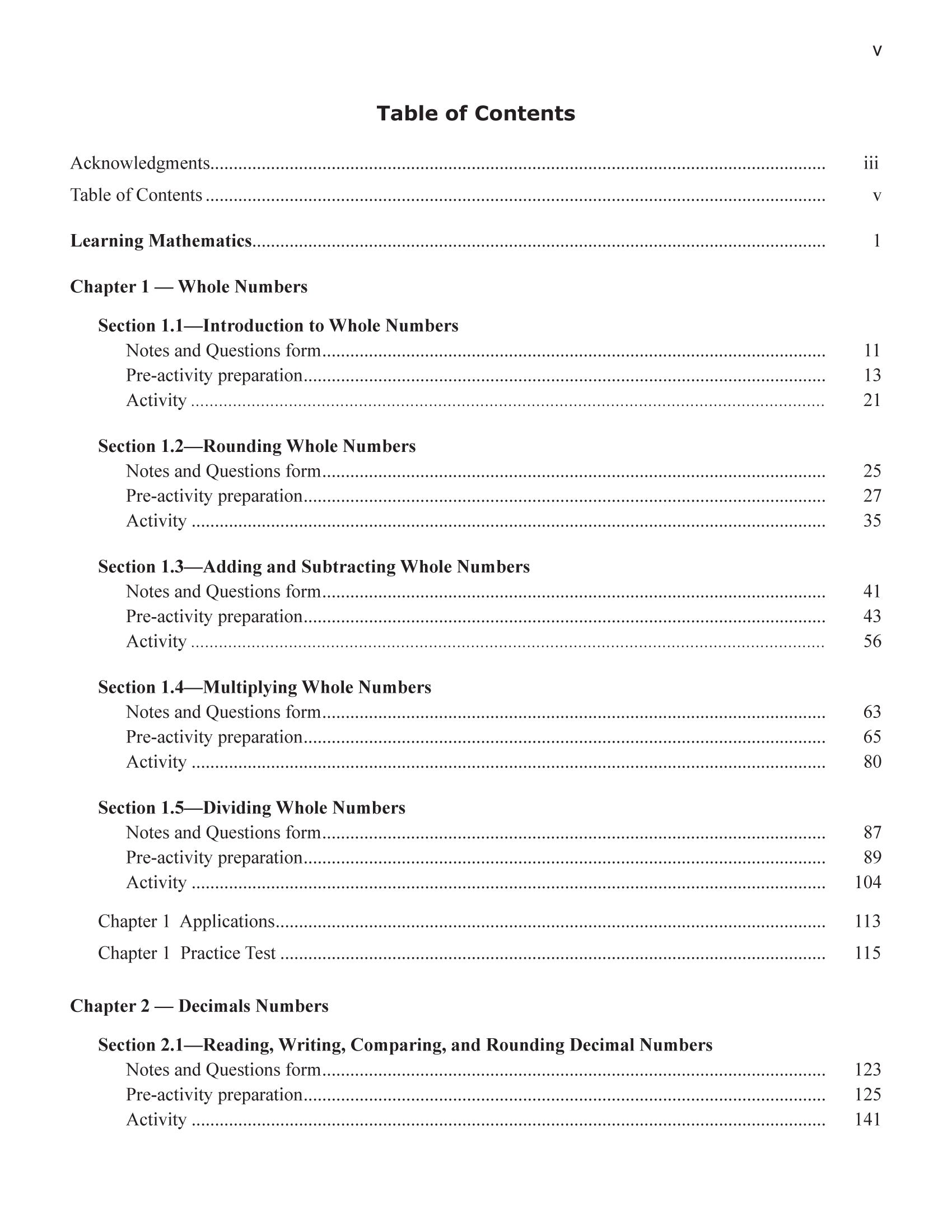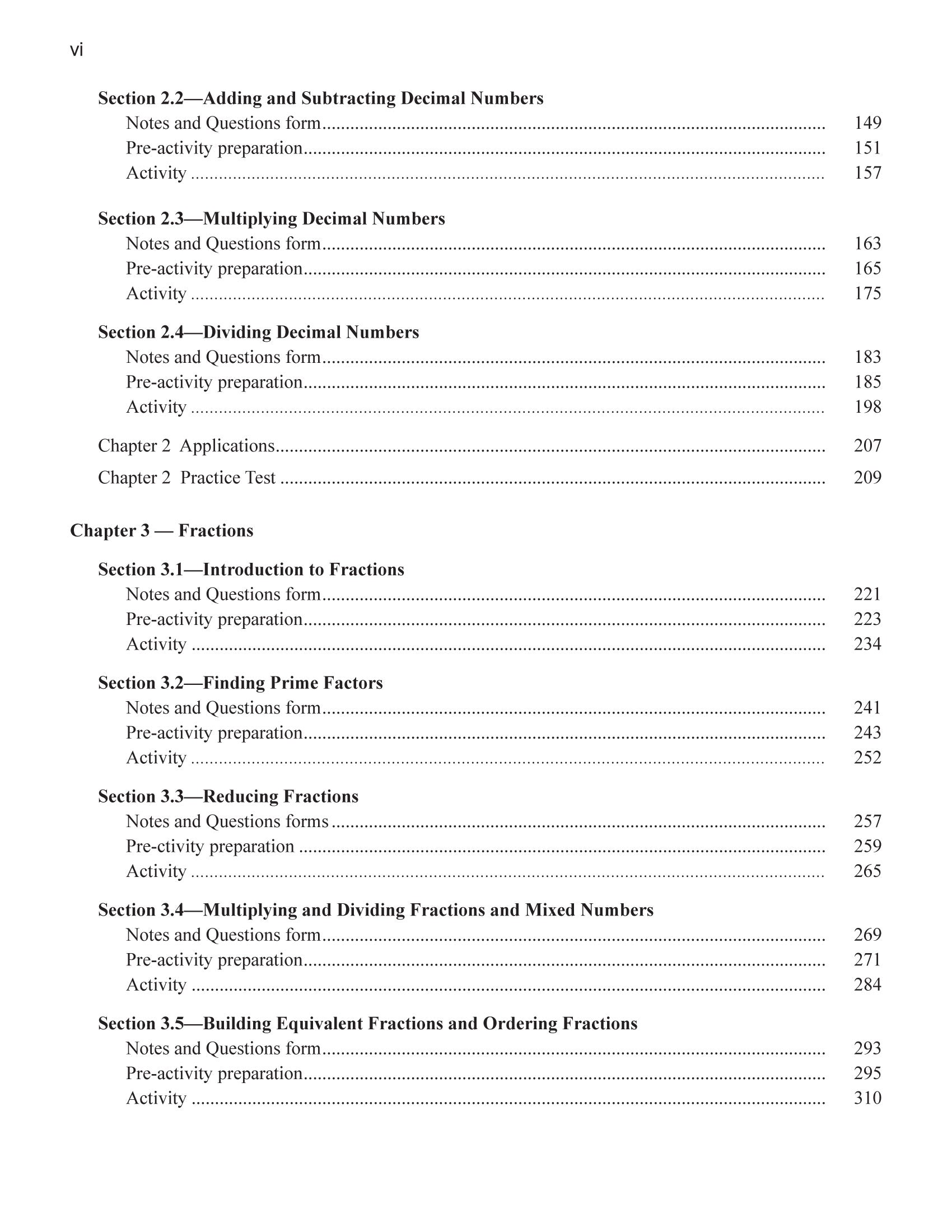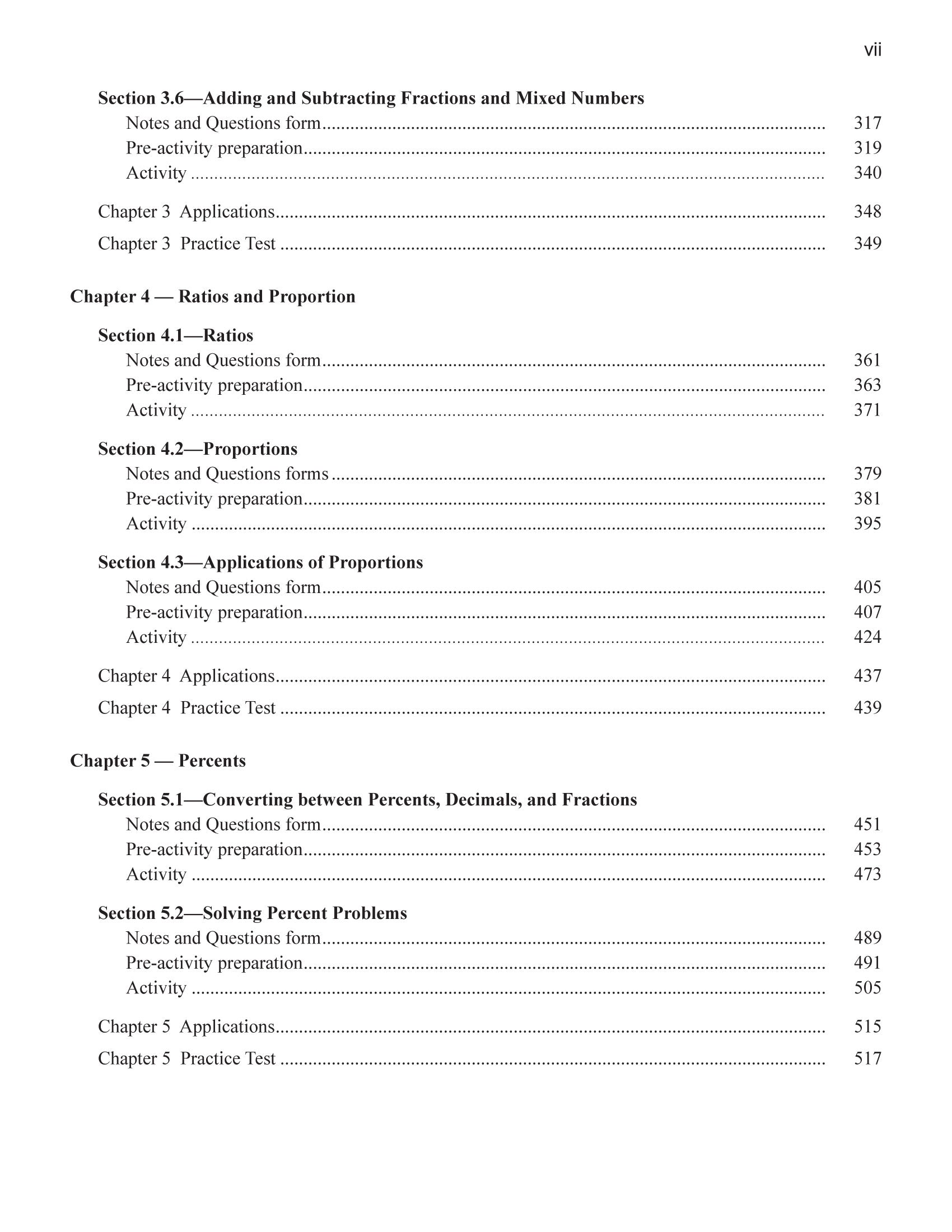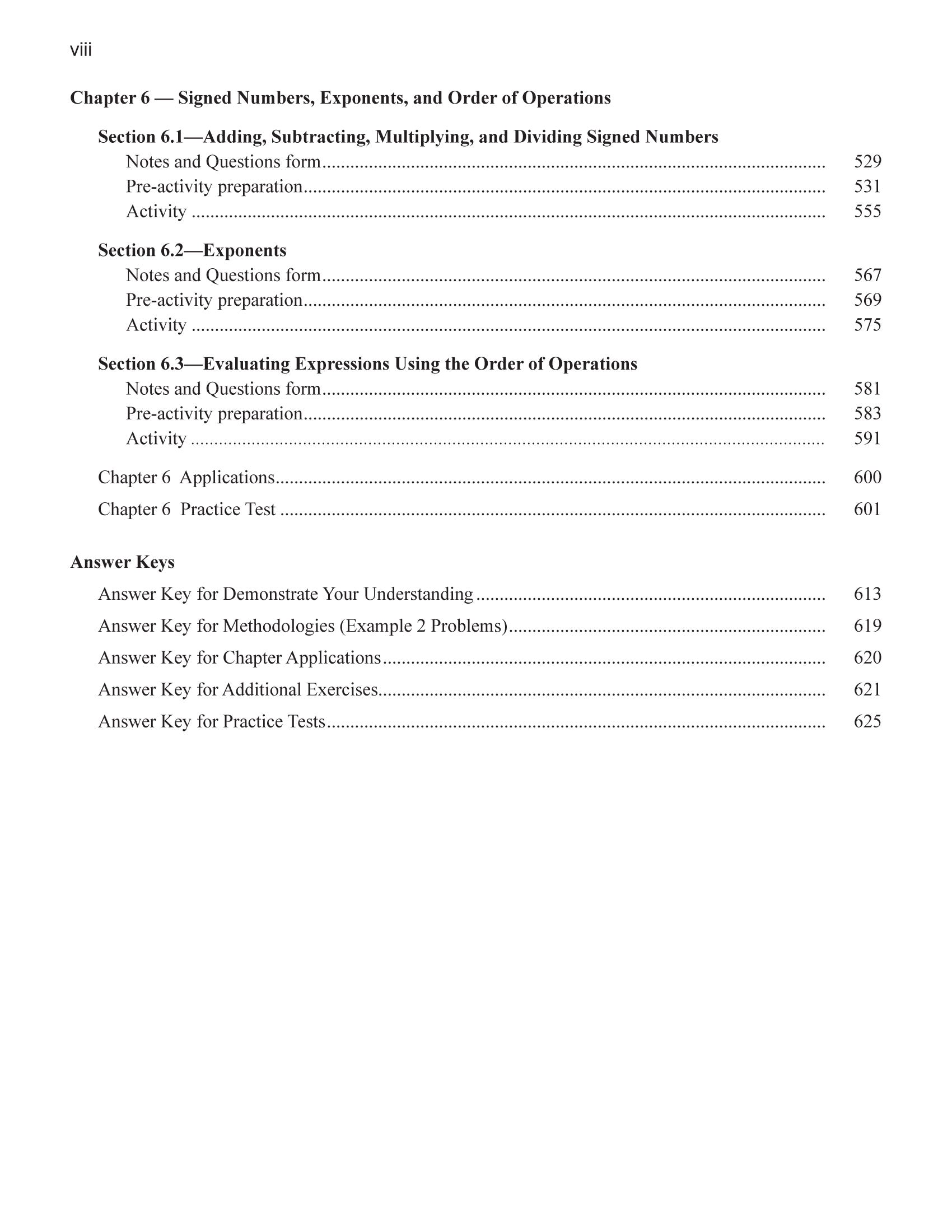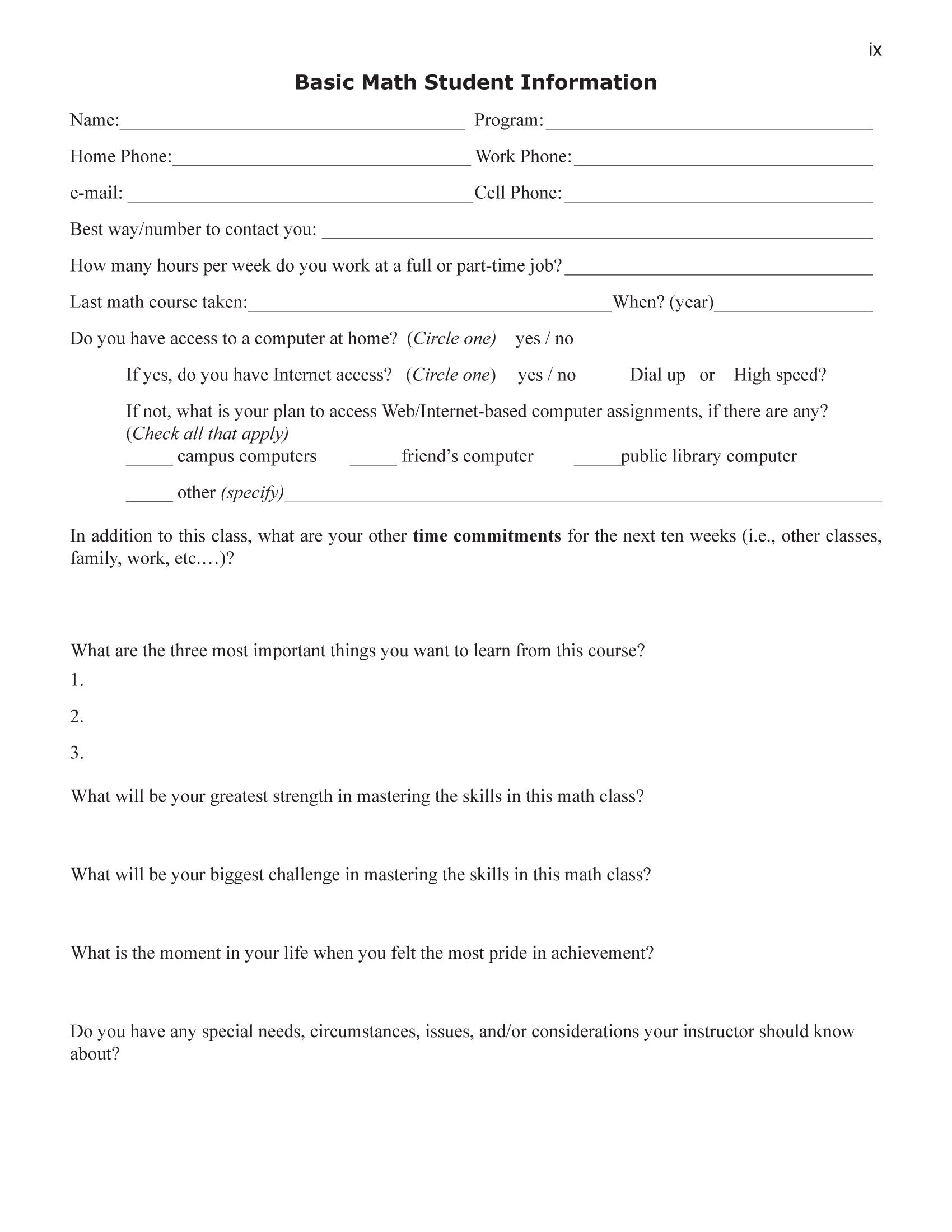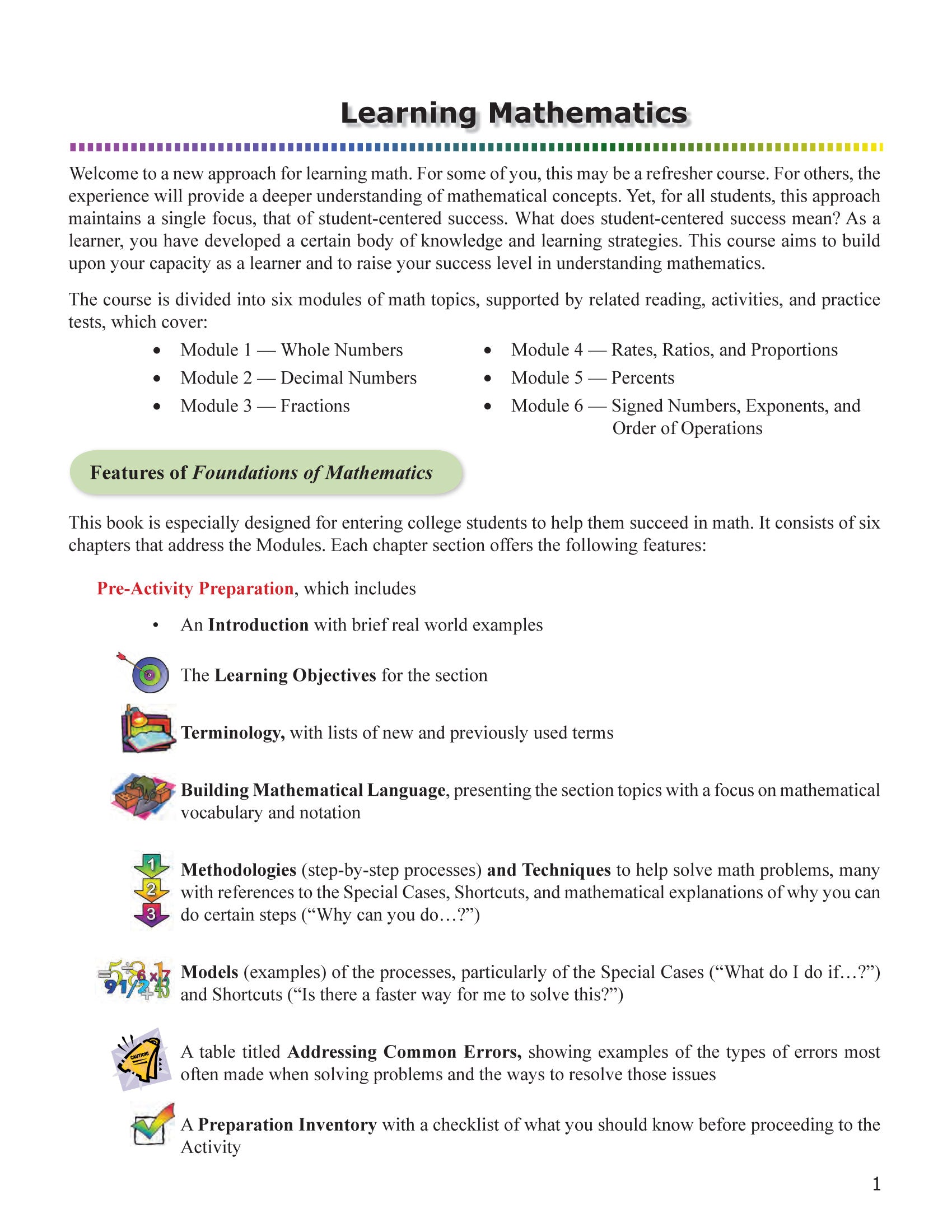Foundations of Mathematics, 3rd Edition
The foundational topics of mathematics-whole numbers, decimals, fractions, ratios, proportions, percent's, signed numbers, exponents, and order of operations-are presented in six modules of learning in Foundations of Mathematics. Though the scope of this book does not differ from that of traditional mathematics textbooks, both the goals and core philosophy of the book do. While it is critical that students learn the content of the course and how to perform calculations, it is equally important that students learn how to learn and how to improve their ability to learn as well as their performance. The innovative and holistic nature of this philosophy entails that the presentational style of Foundations of Math be equally innovative. The following pages present the parts of a sample section, in the order and manner they are presented to students.
http://www.pcrest3.com/fomsl/ig.htm
http://www.pcrest3.com/fomsl/indexIR.htm
646 pages, 6 Chapters, 28 Activities
|
|












